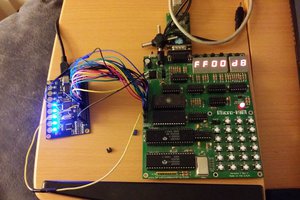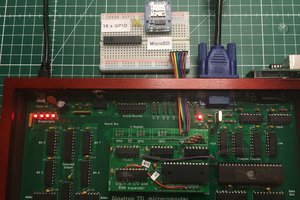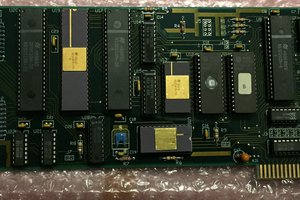The decoder chip in the console is labeled "CXD1800Q". It was probably purpose built for the console or is a proprietary part. A datasheet for the part can't be found. However, based on a test menu and research from a user in the nesdev forum, it was discovered that the "CXD1196AR" decoder chip is 95% the same chip except for one register being left out or undocumented. A datasheet is available for this part and it can be scavenged from Sony Data-Discman units. I have found one of these chips in a Data-Discman DD10EX unit that was damaged.
The CD-ROM drive itself uses a "CXD2500BQ" Digital signal processor and a KSL-360-ADM drive unit. The drive unit can be purchased online but in order for it to have the necessary controller board it needs to be scavenged from certain Sony boomboxes. Here are some models that have the right drive unit:
CFD-250
CFD-260
CFD-703
CFD-757
CFD-767
These drive units all use the same DSP chip that the console uses. The service manual for all of these boomboxes have the schematics for the drive unit.
The BIOS cartridge is nothing more than a bunch of memory chips connected to the SNES bus so figuring out how to map them properly shouldn't be too hard.
Here are some links with more info:
https://problemkaputt.de/fullsnes.htm#snescartcdromdrive
https://forums.nesdev.com/viewtopic.php?f=12&t=13907&sid=02085971bf1922a198dedffe09e67f76
https://byuu.net/compact-discs/structure/
https://tcrf.net/Super_Disc_Boot_ROM
https://en.wikipedia.org/wiki/CD-ROM
https://www.repairfaq.org/sam/cdfaq.htm
https://en.wikipedia.org/wiki/Compact_Disc_Digital_Audio#Technical_specifications
https://en.wikipedia.org/wiki/Constant_linear_velocity
https://uotechnology.edu.iq/dep-laserandoptoelec-eng/laboratory/4/laser%20application/exp3.pdf
http://www.osta.org/technology/cdqa.htm

 Jac Goudsmit
Jac Goudsmit
 Marcel van Kervinck
Marcel van Kervinck

 Keith
Keith
Hello, j'aimerais récupéré les donné pour fabliqué la coque du boitier lecteur